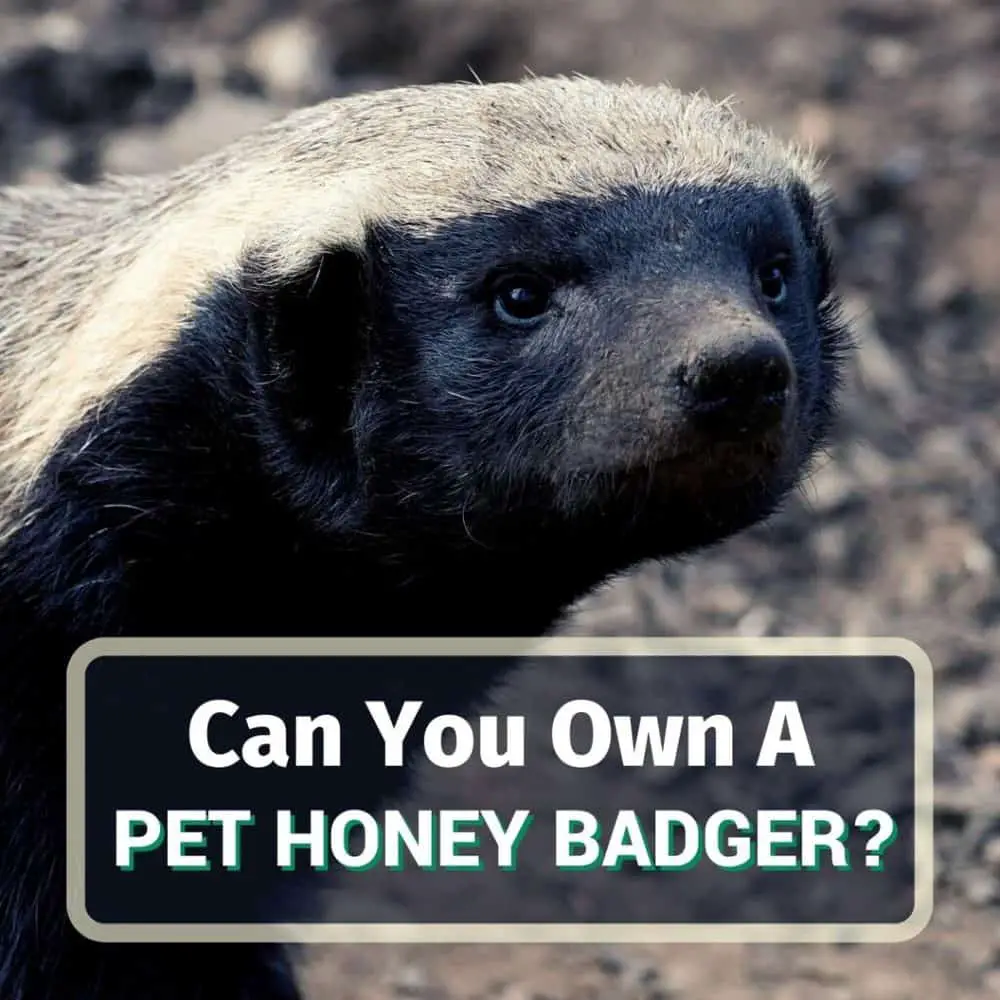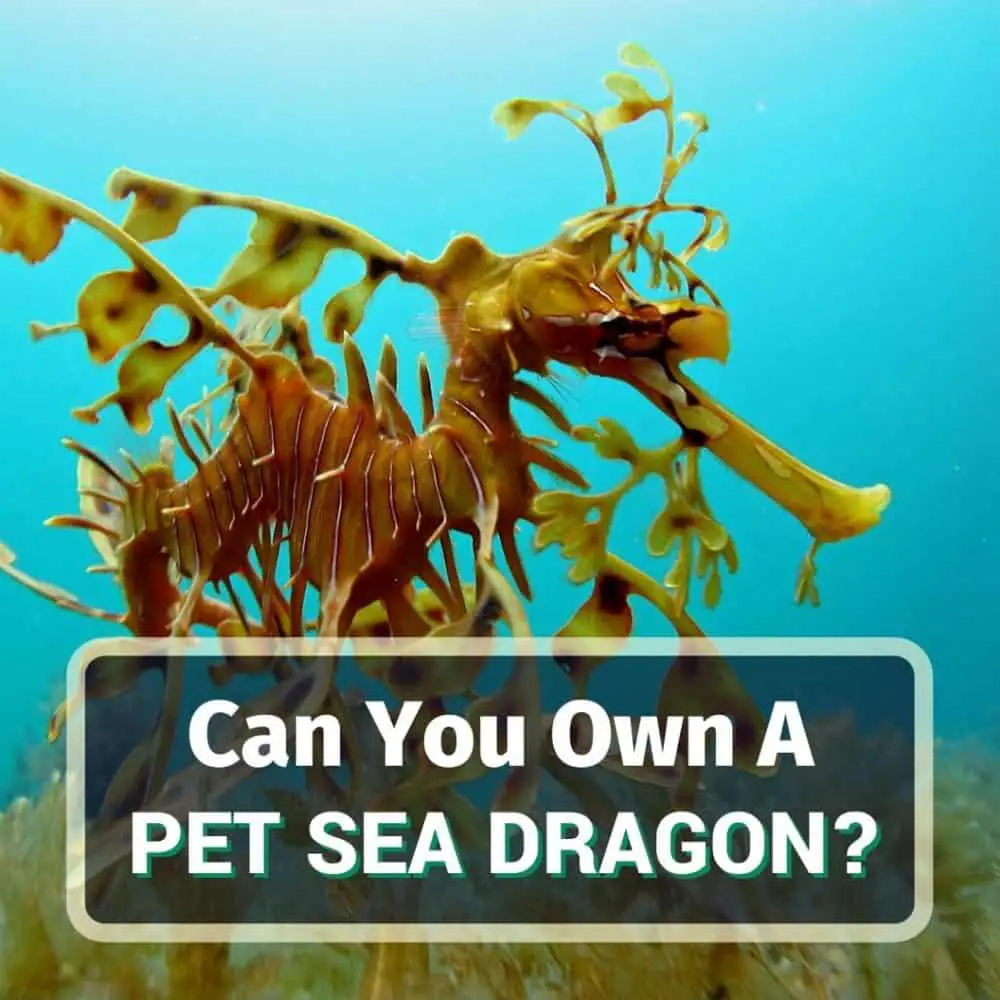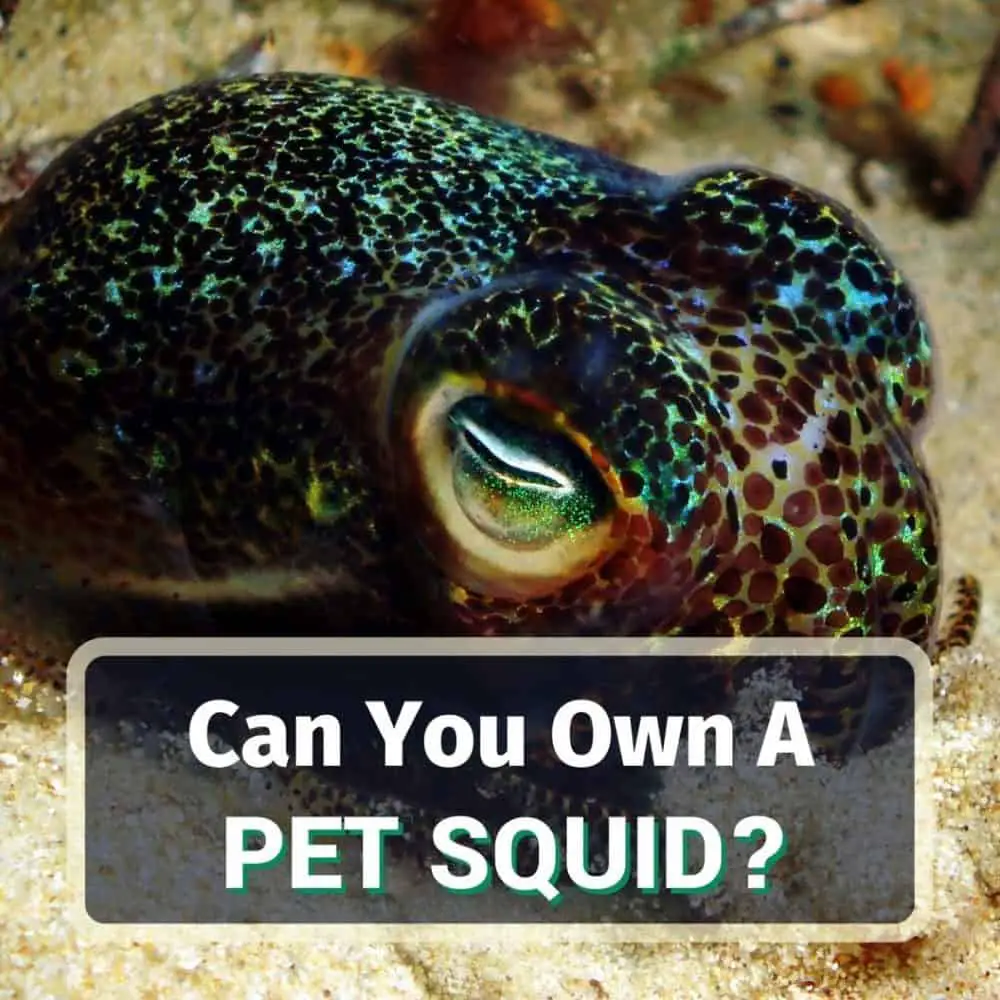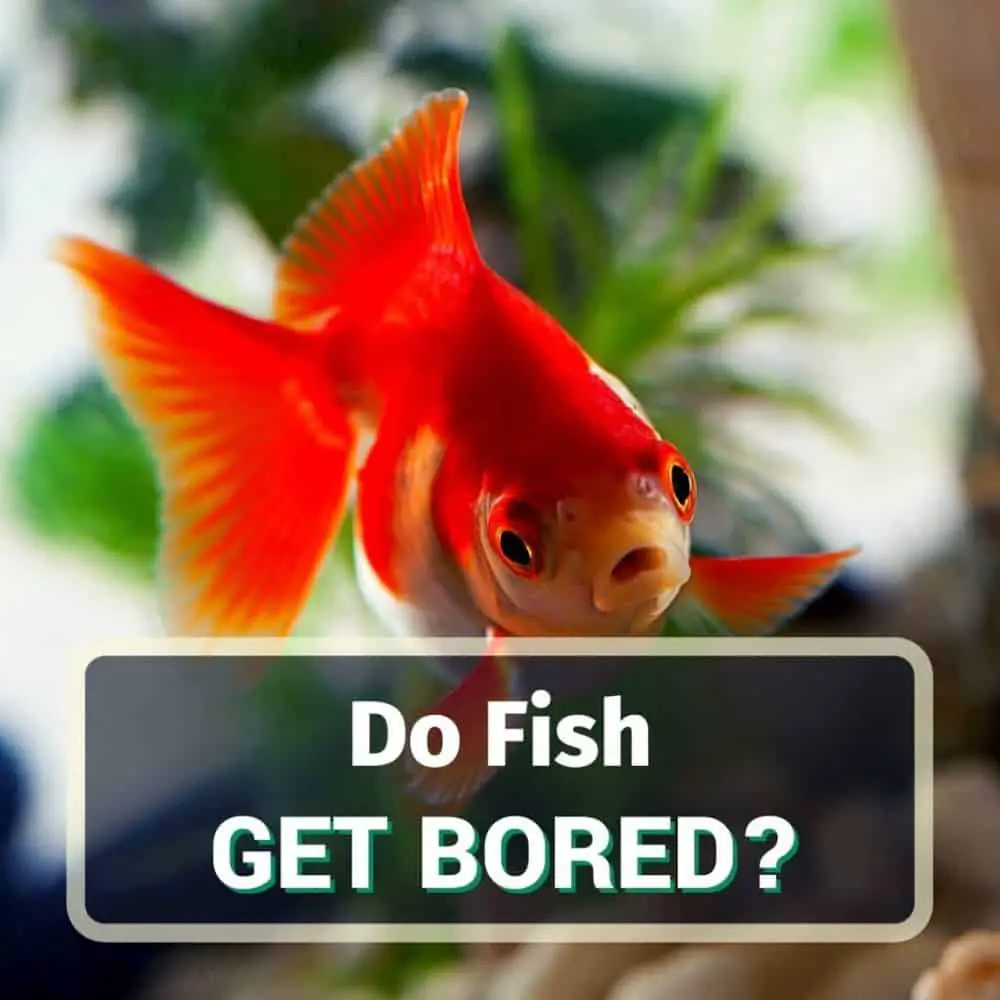Can you have a mink as a pet? The short answer is yes. Yes, you can keep a mink as a pet. However, having a pet mink is a complicated undertaking. Despite being domesticated, minks are not cuddly pets. In this article you learn what it is like to have a pet mink.
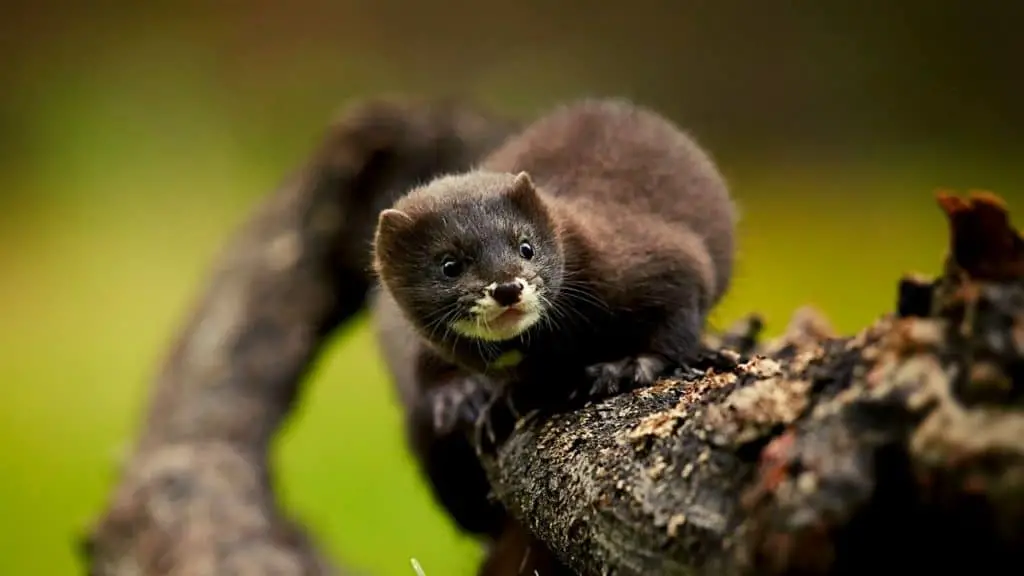
Because minks are in the weasel (Mustelid) family, many people assume that minks are similar to ferrets. The reality is that minks and ferrets (and also least weasels or sables) are very different animals.
I’m an animal lover and have had many types of exotic animals as pets. However, let me assure you that having a mink as a pet can be a nightmare that you probably don’t want to have.
Is it Legal to Own a Mink?
Whether it’s legal to own a mink depends on the state in which you live.
Many states only have laws about exotic animals or furbearers like minks if the state prohibits that specific animal or you need a special permit to own it.
States that specifically allow minks as pets include:
- Colorado
- Idaho
- Kentucky
- Massachusetts
- Nevada
- North Dakota (fur farm minks)
- Utah (American minks)
- Virginia (if the adult is over 1.15 kg and it’s not a wild mink)
States where you need a special permit to own a mink include:
- Indiana
- Michigan
- Missouri
- Nebraska
- North Dakota
- Utah
States that specifically prohibit mink ownership include:
- Minnesota
- Rhode Island (American minks)
What Does it Mean to Have a Pet Mink?
Before you decide that you want a pet mink, you need to understand what’s involved in having a pet mink.
#1 Minks Are Semi-Aquatic
In the wild, proximity to water is the most important part of a mink’s habitat. Wherever they take shelter, it will always be near a coastline, river, lake, creek, or marsh because they have an instinct to spend a lot of time in the water.
One study showed that caged minks have high levels of the stress hormone cortisol when they don’t have a place to swim.
If you want a happy pet mink, you should ensure that their habitat includes access to water for swimming.
#2 Minks Have Complicated Housing Needs
Minks have jaws that are strong enough to bite through some metals. I’ve seen them tear through ferret cages like they were made from matchsticks. They are also escape-artists.
Thus, you will need to make sure to buy a stainless steel cage for your mink with a raccoon-proof latch.
When you think of setting up a mink habitat, imagine what type of environment it would have in a zoo, and work in that direction.
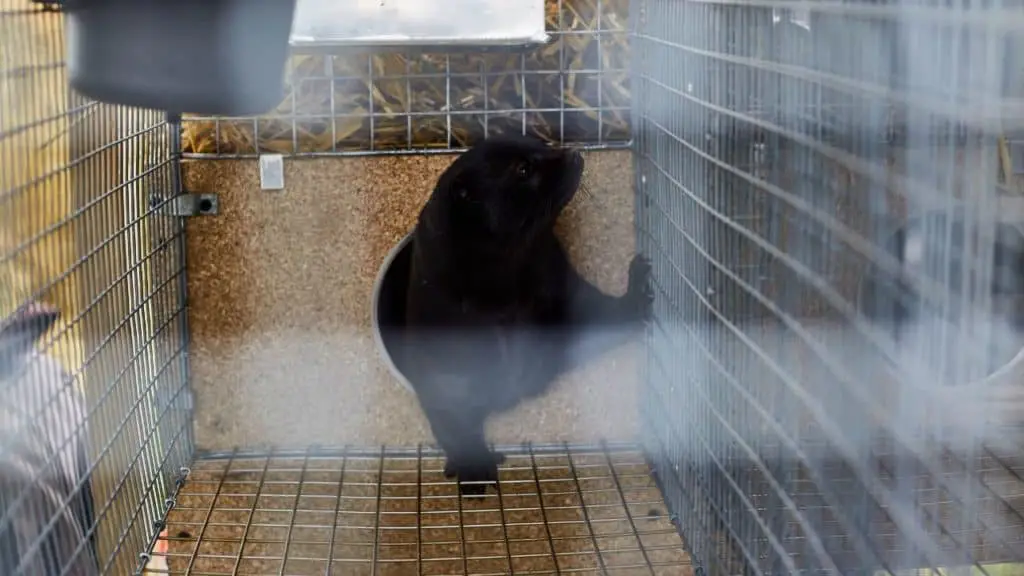
At a minimum, a mink should have a 3-level ferret cage. If at all possible, you should house your mink in a large outdoor cage rather than an indoor cage. A mink is happiest if it has a lot of space, water, and multiple levels to run around and expend all its boundless energy.
Minks who live in cramped conditions without access to water will be stressed and pace their cage to try to satiate their high-energy drive.
#3 Minks Have Demanding Diets
Minks are strict carnivores. They eat small mammals, fish, amphibians, and insects. In the wild, they mainly eat aquatic animals. However, they also hunt muskrats, rats, rabbits, birds, and snakes. For a complete overview of the minks’ diet, read the linked article.
While you can’t go out and buy a bag of mink food, you can feed minks high-protein ferret food. However, you should supplement heavily with raw meat and bones from animals like fish, chicken, or deer.
#4 Domestication in Minks Can Be Misleading
Don’t expect minks to be tranquil pets you can hold and pet.
Even though mink farmers have selectively bred for traits that make minks more suitable as domestic fur-bearing animals. However, they’re still aggressive and don’t live well with humans.
One study showed that fur farm minks raised entirely in captivity for 70 generations still maintain their wild nature.
#5 Minks are Aggressive
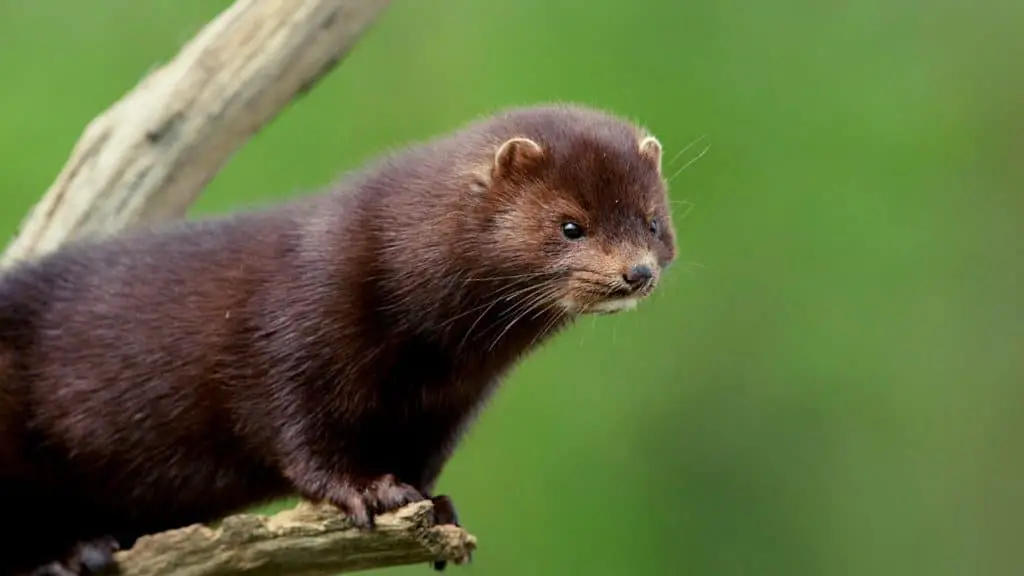
While minks you raise from a baby may bond with you, they quickly become less cute and cuddly and start wanting to bite everything with their needle-sharp teeth.
If you think a pet mink will be docile like a ferret, think again. If you decide to handle your pet mink, you should expect to end up bloody. They can even bite through thick gloves. Minks can latch on down to the bone and refuse to let go, requiring stitches or worse.
You would have the same problem with other species like mongooses that belong to the weasel family too.
#6 Minks Have a Spray Like a Skunk
Minks have a foul-smelling odor similar to a skunk that they can spray when they’re alarmed. They combine this spray with hissing when they feel threatened. They also use this scent to mark their territory.
#7 Minks are an Invasive Species
Minks are escape artists, and if your mink escapes into the wild, it can wreak havoc on the environment. Minks will attack animals on domestic farms, pets, and entire colonies of ground-nesting birds.
In the UK, American minks have driven some species like voles nearly to extinction.
If you get a pet mink and can’t handle it, never release it into the wild. Instead, contact a mink rescue organization to take it.
How to Get a Pet Mink
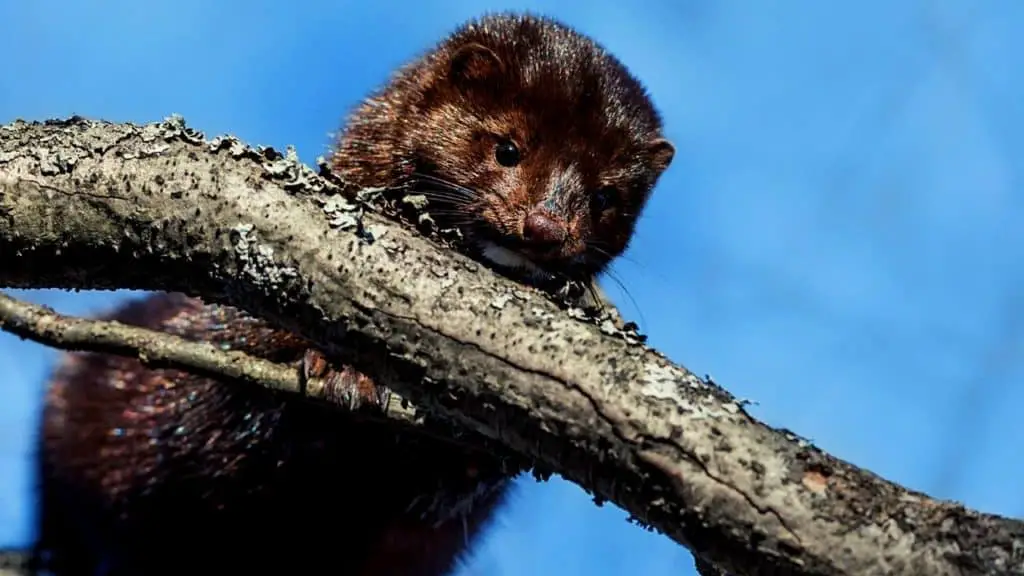
The European mink is critically endangered, so the only mink you will find to buy will probably be an American mink.
You won’t find a mink for sale in a pet shop, and mink farms raise minks for fur only. Thus, you would need to find an online source to buy a mink.
There are only a few people who raise minks to sell as pets rather than for fur. Mink owners who know the nature of minks and the work involved don’t want unprepared owners to take on a mink.
Because most sellers screen their buyers, they don’t list mink costs online. Because of their scarcity, sellers can name their price as several hundred dollars, $1000, and beyond.
FAQ
Here are the answers to some of the most frequently asked questions about minks.


